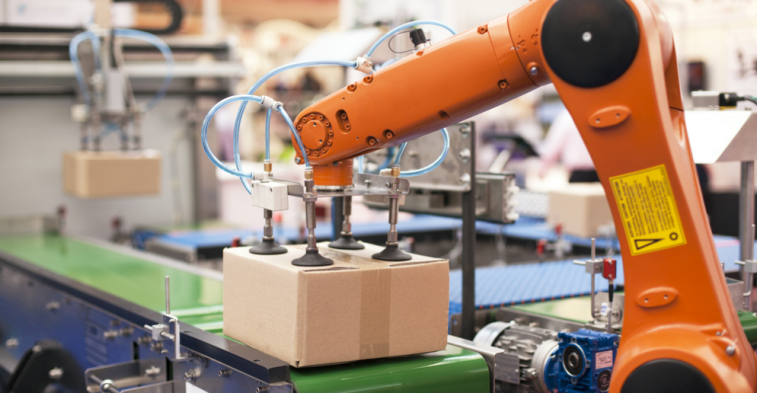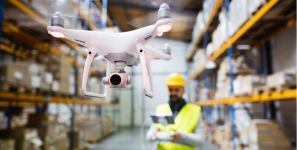Leading Trends in Warehouse Automation and Management
The warehouse economy is getting stronger and stronger, with more jobs available each month. Still, there is a struggle to fill all available job positions. Luckily, many warehouses already found an effective solution to their labor, operations, and production challenges – advanced robotics and innovative automation and logistics. In this article, we will introduce you to leading trends in warehouse automation and management.
Warehouse robotics
Robotic autonomous forklifts are at work in a large number of warehouses and distribution centers. Remarkable new technologies have enabled reduced warehousing operational costs, optimized workflows, and improved the bottom line. Technology continues to evolve, and calculations around return on investment are currently more favorable than ever.
Automated guided vehicles and autonomous mobile robots
Automated guided vehicles and autonomous mobile robots are robotics innovations that are changing the game in warehouse management and operations. They typically include automated forklifts, floor cleaners, and pallet movers that come in various sizes and vary in capabilities. Each one is designed to support the function of a warehouse and manufacturing system. Advanced software and systems are used to upgrade traditional forklift equipment and provide autonomous robotic functionality. Robotics software allows scaling and controlling of all operations just with a simple click of a button. Managing the material flow and increasing the efficiency of operations has never been easier.
Automated guided vehicles changed warehouse practices for same-day shipping. Innovative solutions include robotic arms for lifting, barcode scanners for automatic inventory management, automated forklifts that move pallets, and much more. Products are shipped faster than ever, and the end result is a happier customer.
Automated picking process
Picking is probably the most time-consuming activity in every warehouse worldwide as it requires countless work hours and more labor work than any other operation. Going from aisle to aisle and product to product eats up so much production time. Fortunately, there is a way to reclaim that valuable time and take productivity to the next level. Many warehouses are introducing automated picker robots into their operations. They gather products and bring them to a central location, where the human workforce can fulfill the next job tasks much faster.
Automated cleaning machines
Autonomous machines have improved the way warehouses operate. Furthermore, warehouse cleaning also became automated. Robotic floor care is possible since the AI system enables the robot to navigate complex warehouse environments. Autonomous cleaning machines work safely and efficiently alongside employees in warehouses.
Big data and analytics
It’s required to analyze performance data to find the areas of manufacturing or warehouse operations that can be improved. Advancements in big data analytics can help businesses and manufacturers collect their data. They identify operational drawbacks and deficiencies – in order to eventually improve them. The use of barcode scanners on a product changed the way of moving through a warehouse. Each step of the process is scanned, and it’s easy to see where time is lost and what slows the system. Big data analytics solutions provide valuable information from daily operations and enable warehouse management to make smart decisions that can improve many aspects of performance.
The Internet of Things
For successful warehouse automation and management, multiple moving parts need to communicate with each other continuously. The Internet of Things (IoT) can make this happen. This technology can connect all devices and systems and keep them in sync while collecting operations data. Warehouse management can see and trace everything 24/7- from inventory and production levels to shipments going in and out, and much more. Radio Frequency Identification (RFID) attaches a tag to a package or a whole pallet to automatically track the item’s exact location at every moment. When everything in the warehouse is easily tracked and coordinated, it’s possible to achieve maximum efficiency.
Forklift telematics
Forklift telematics is an advanced smart technology system that uses sensors to track every truck in a fleet through online software accurately. It provides a 360-degree view of equipment and offers information about active trucks – where they are currently, and if any needs scheduling maintenance. To use wireless fleet management, a warehouse needs to install modules equipped with sensors, GPS, and telemetry technology onto their machines. By doing so, they can collect valuable data that provides new insight into various aspects of warehouse management and operations. The system generates instant alerts about possible vehicle impacts that can cause damage or injury and provide information about potential problem areas in a warehouse or outdoor environment.
Final thoughts on warehouse automation and management
Since we know all advantages of warehouse automation and management, it’s understandable why workers worry that automated systems and robots will eventually replace them in all activities. Nevertheless, automation actually improves the lives and jobs of everyone in this industry. That’s primarily because of enhanced worker safety – automated devices handle all stressful, daunting, and repetitive tasks. It allows workers to focus on more value-added tasks and therefore boosts their morale.
____________________________________________________________________
Samuel Jefferson is working for PortaBox Storage Seattle. Eight years of experience gave him expertise in many areas of advanced warehouse management and automated operations, so he likes to share his knowledge occasionally by writing blogs. In his spare time, Samuel practices martial arts and enjoys outdoor activities with his son.





Leave a Reply